Evolutionary Ecology
The department of Evolutionary Ecology gathers complementary skills in behavioural ecology, population dynamics, population biology, community ecology, and methodology (statistics and modelling). The research done in the department aims at studying how animal species evolve in a changing world by understanding the causes of the evolution of traits, adaptations and interactions. For that, we consider different levels of organization from individuals to populations and communities. Because organisms cannot be considered isolated from other biotic factors, we consider pathogens but also competing species within communities.
We study how individuals adapt to their environments that are largely impacted by anthropic pressures, and how life history traits and behaviour evolve in response to these pressures. Although we mainly focus on phenotype, we more and more consider the mechanistic link between the genotype and the phenotype. We develop the theoretical framework of our discipline through a conceptual and modeling approach. In parallel, we test hypotheses that arise from theoretical predictions through experimental, comparative and observational approaches on different biological models (insects, birds, mammals). Experimental approaches are developed in the laboratory (insect model) and in natura (bird, insect and mammal models). Observational and comparative research is mainly concerned with vertebrates. Our approaches are also, and increasingly, interested in the mechanisms of adaptive responses. In addition to the classical approaches of demographic analysis and trait change, methods of ecophysiology, chemical ecology and molecular biology are used.
Our department hosts several long-term studies of wild populations of different species. These long-term studies offer a valuable way to understand how biotic and abiotic factors affect individuals’ life history traits, and the functioning of populations in natura. Five populations of mammalian species are thus monitored for several years (more than 40 years on roe deer, 30 on Alpine marmots, 25 years on cats, 16 years on zebras, and 20 years on impala). Two of our study sites (La Sassière in Vanoise National Park (Alpine marmots) and Hwange National Park) have been certified as “Site d’Etude en Ecologie Globale” (SEEG), and two (ZA “Hwange” and ZA “Antarctic and sub-Antarctic”) were certified as “Zone Atelier” by the CNRS.
The department of Evolutionary ecology is also largely involved in training activities. Lastly, we also have strong socio-economic relationships. Indeed, because we address questions of major societal interest (global warming, public health) we tightly collaborate with socio-economic partners (Office Français de la Biodiversité, Vanoise National Park, Hwange National Park in Zimbabwe, Office National des Forêts, etc.) and participate to general public and media events.
Publications
Display of 2041 to 2070 publications on 2483 in total
Mate-guarding strategies and male competitive ability. Results from a field study in an orb-weaving spider.
Animal Behaviour . 71 : 1315-1323
Journal article
see the publicationUsing a proxy of plant productivity (NDVI) to find key periods for animal performance: the case of roe deer
Oikos . 112 : 565-572
Journal article
see the publicationWaning of maternal immunity and the impact of diseases: the example of myxomatosis in natural rabbit populations
Journal of Theoretical Biology . 242 : 81-89
Journal article
see the publicationWhat determines testis size in the domestic cat (Felis catus L.)?
Biological Letters . 43 : 41-49
Journal article
see the publicationMolecular phylogeny of the extinct giant deer, Megaloceros giganteus.
Molecular Phylogenetics and Evolution . 40 ( 1 ) : 285-291
Journal article
see the publicationMolecular Phylogeny of the Extinct Giant Deer, Megaloceros giganteus
Molecular Phylogenetics and Evolution . 40 : 285-291
Journal article
see the publicationThe evolutionary radiation of Arvicolinae rodents (voles and lemmings): relative contribution of nuclear and mitochondrial DNA phylogenies
BMC Evolutionary Biology . 6 : 80
Journal article
see the publicationCONSERVED PHENOTYPIC VARIATION PATTERNS EVOLUTION ALONG LINES OF LEAST RESISTANCE AND DEPARTURE DUE TO SELECTION IN FOSSIL RODENTS
Evolution - International Journal of Organic Evolution . 60 : 1701-1717
Journal article
see the publicationA new endemic species of the subgenus Mus (Rodentia, Mammalia) on the Island of Cyprus
Zootaxa . 1241 : 1-36
Journal article
see the publicationExemple de démarche biométrique : une étude de la variabilité génétique humaine par la double analyse en coordonnées principales
Biométrie Humaine et Anthropologie - revue de la Société de biométrie humaine . 24 : 5-11
Journal article
see the publicationFréquences alléliques et cohérence entre marqueurs moléculaires : des outils descriptifs
Colloque BRG . : 1 volume
Eigenanalysis of selection ratios from animal radio-tracking data
Ecology . 87 : 2349-2355
Journal article
see the publicationResource partitioning in a grazer guild feeding on a multilayer diatom mat
Journal of the North American Benthological Society . 25 : 800-810
Journal article
see the publicationSpatial modelling : a comprehensive framework for principal coordinate analysis of neighbour matrices (PCNM)
Ecological Modelling . -- : 483-493
Journal article
see the publicationTransmission of Toxoplasma gondii in an urban population of domestic cats (Felis catus).
International Journal for Parasitology . 36 ( 13 ) : 1373-82
Journal article
see the publicationTransmission of Toxoplasma gondii in an urban population of domestic cats (Felis catus)
International Journal for Parasitology . 36 : 1373-1382
Journal article
see the publicationContact rates and exposure to inter-species disease transmission in mountain ungulates.
Epidemiology and Infection . 134 : 21-30
Journal article
see the publicationLe Pestivirus de l’isard (Rupicapra pyrenaica) dans la Réserve Nationale de Chasse et de Faune Sauvage d’Orlu : état actuel des connaissances
Congrès annuel du Groupe d’Etudes sur l’Ecopathologie de la Faune Sauvage de Montagne .
Conference paper
see the publicationLavandula species as accompanying plants in Cupressus replanting strategies : Effect on plant growth mycorrhizal soil infectivity and soil microbial catabolic diversity
Applied Soil Ecology . -- : 190-199
Journal article
see the publicationIdentification of Genomic Species in Agrobacterium Biovar 1 by AFLP Genomic Markers
Applied and Environmental Microbiology . 72 ( 11 ) : 7123-7131
DOI: 10.1128/AEM.00018-06
Journal article
see the publicationFluorescent pseudomonads occuring in Macrotermes subhyalinus mound structures decrease Cd toxicity and improve its accumulation in sorghum plants
Science of the Total Environment . 370 : 391-400
Journal article
see the publicationHind foot length: an indicator for monitoring roe deer populations at a landscape scale
Wildlife Society Bulletin . 34 ( 2 ) : 351-358
Journal article
see the publicationLes effets de la canicule de l'été 2003 sur le chevreuil. Suivi à Chizé
Faune Sauvage . 273 : 15-19
Journal article
see the publicationSerological and molecular ecology of Listeria monocytogenes isolates collected from 13 French pork meat salting–curing plants and their products
International Journal of Food Microbiology . 112 ( 2 ) : 153-161
Journal article
see the publicationPotential of a 16S rRNA-Based Taxonomic Microarray for Analyzing the Rhizosphere Effects of Maize on Agrobacterium spp. and Bacterial Communities
Applied and Environmental Microbiology . 72 ( 6 ) : 4302-4312
DOI: 10.1128/AEM.02686-05
Journal article
see the publicationLavendula species as accompanying plants in Cupressus replanting strategies: Effect on plant growth, mycorrhizal soil infectivity and soil microbial catabolic diversity
Applied Soil Ecology . 34 ( 2-3 ) : 190-199
Journal article
see the publicationEcotoxicology and population dynamics: Using DEBtox models in a Leslie modeling approach
Ecological Modelling . 188 ( 1 ) : 30-40
Journal article
see the publicationEcotoxicology and population dynamics: on the use of DEBtox models in a Leslie modelling approach
Ecological Modelling . 188 : 30-40
Journal article
see the publicationHow predator food preference can change the destinity of native prey in predator-prey systems
Biological Invasions . 7 : 795-806
Journal article
see the publicationMeasuring diversity from dissimilarities with Rao`s quadratic entropy: are any dissimilarity indices suitable?
Theoretical Population Biology . 67 : 231-239
Journal article
see the publication
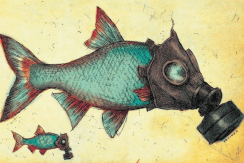
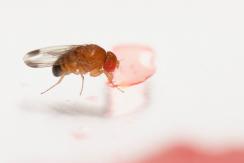
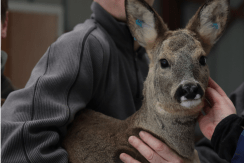
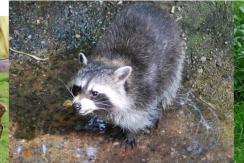
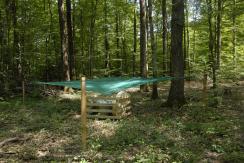
You also, comment on this article